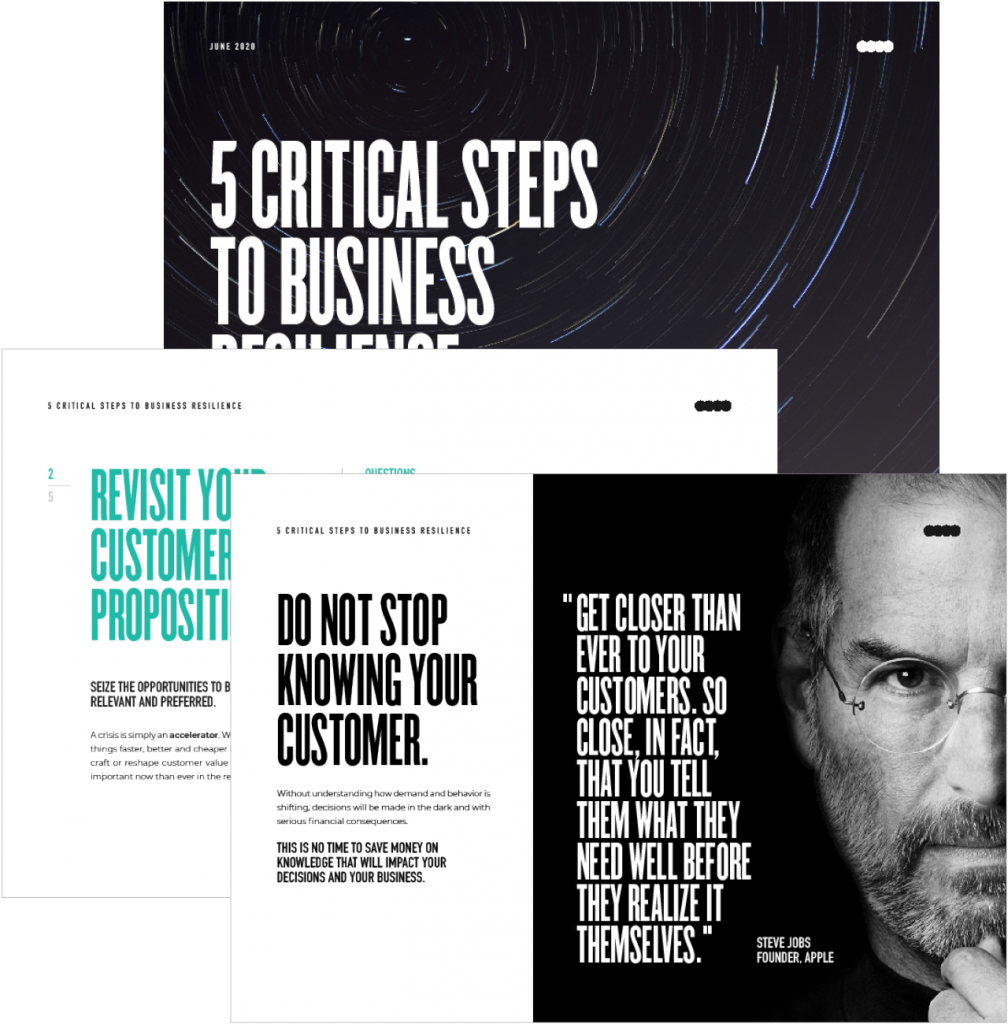Most of the conversations we are privy as consultants at LHBS are discussions about firefighting, cost cutting and initiatives to achieve better operational efficiencies.
However, all these are irrelevant without customers and revenues. A pure cost focus in the profit equation during unprecedented business environments is important but companies can downsize themselves into non existence. Without also focusing on understanding and meeting demand while exploring innovative ways to protect and grow revenues, the post lockdown reality could be grim for the bottom line.
THE
CRITICAL
FIVE
5 actions that are imperative
to business health.
1/5
RESEARCH THE SHIFTING DEMAND.
Expect and sense change
With marketing cuts across the board by major marketers, one of the activities that is taking a hit is research. While marketers are expressing concerns about having little data to monitor the impact of new demand, new expectations, new customer journeys, research budgets are predicted to decline.
Facts:
- 75% of marketers will cut research budgets while 51% believe that new behaviors will stick.
- Buying behavior is shifting with an accelerated adoption of digital channels.
- 54% of US Gen Z claim they can now live without many of the brands they used before.
- 260 billion Euro is the expected revenue loss in the retail sector in Europe because of changing demand.
2/5
REVISIT YOUR CUSTOMER VALUE PROPOSITIONS.
Seize the opportunities to be more relevant and preferred.
A crisis is simply an accelerator. We have always wanted things faster, better and cheaper but the imperative to craft or reshape customer value propositions is more important now than ever in the recent past.
Questions to ask:
- Faster: Are you being responsive and reducing customer effort.
- Better: Are you providing the needed and expected levels of quality across the board.
- Cheaper: Are you removing financial burdens risks?
3/5
RE-EVALUATE THE STRATEGY.
Cost cutting alone will not save you.
While cost cutting and operational efficiency measures are vital to survive this or any crisis, most businesses are reducing spending on the most vital element of business: demand driven revenue.
Facts:
- 65% of polled business in the US suffered a loss in revenue while most are trying to ‘live to fight another day’ by rejecting initiatives associated with costs.
- Most businesses are focusing their efforts in operational efficencies.
- Businesses that increased marketing spend during the Great Depression drove revenues faster than those who reduced revenue driving expenditures.
4/5
RESPOND WITH AGILITY.
Build, measure, learn to drive revenue growth
Build business Agility not just agility on team level. Design a pro- cess to select the most opportunistic areas to experiment with for growth Set time limits for teams to develop a business case. If it does not work, move on fast. Classically, fail fast, learn fast.
Rethink your value chain – what are the core capabilities and assets that you need to own in the future and what can be out sourced.
Suspend traditional ways of making decisions and traditional processes. Envision, empower and deliver. Your stakeholders will thank you for it.
5/5
RESHAPE YOUR TEAMS.
The hybrid workforce is here
Returning to ‘work’ will not only be affected by safety concerns but also the realization that working remotely has been effective while allowing employees more flexible approaches.
You need to realize remote work balanced with onsite team work will be the new reality and Consider how you setup agile remote/onsite hybrid teams and what work is performed effectively virtually and what work benefits form more social interaction.

Download 5 Critical Steps to Business Resilience Report.
learn how to
- Research shifting demand to expect and sense change.
- Revisit your customer value propositions to be more relevant and preferred.
- Re-evaluate your strategy beyond cost-cutting, respond with agility to drive revenue growth.
- Reshape your teams to strive in the ‘New Normal’.